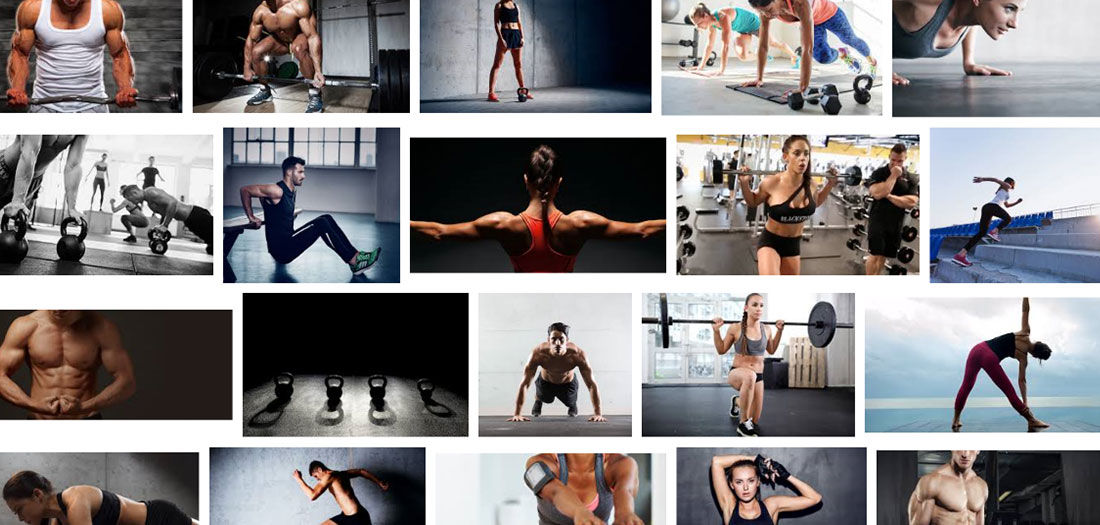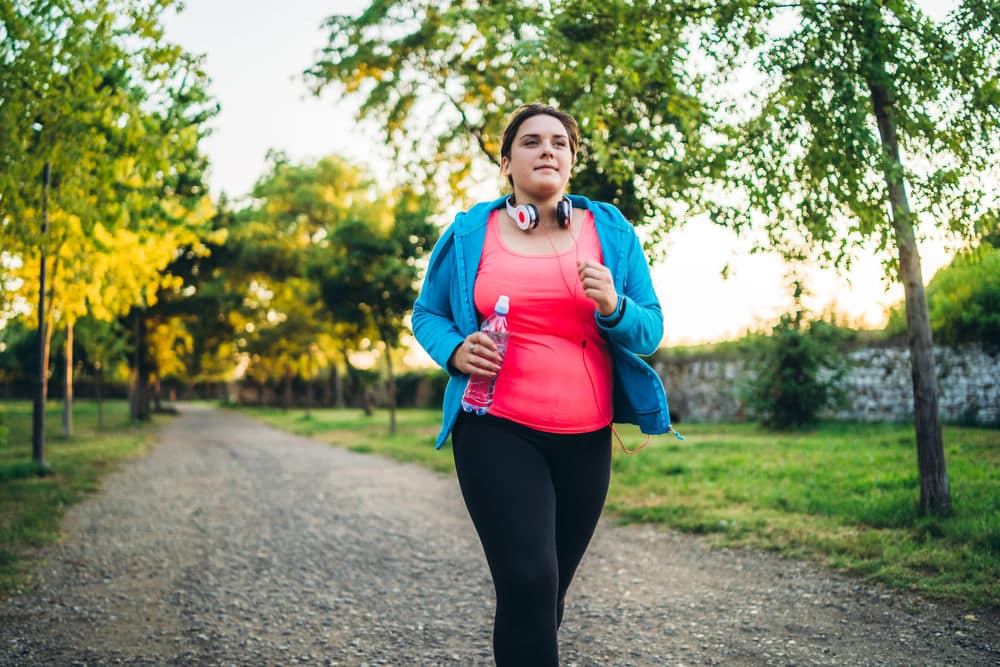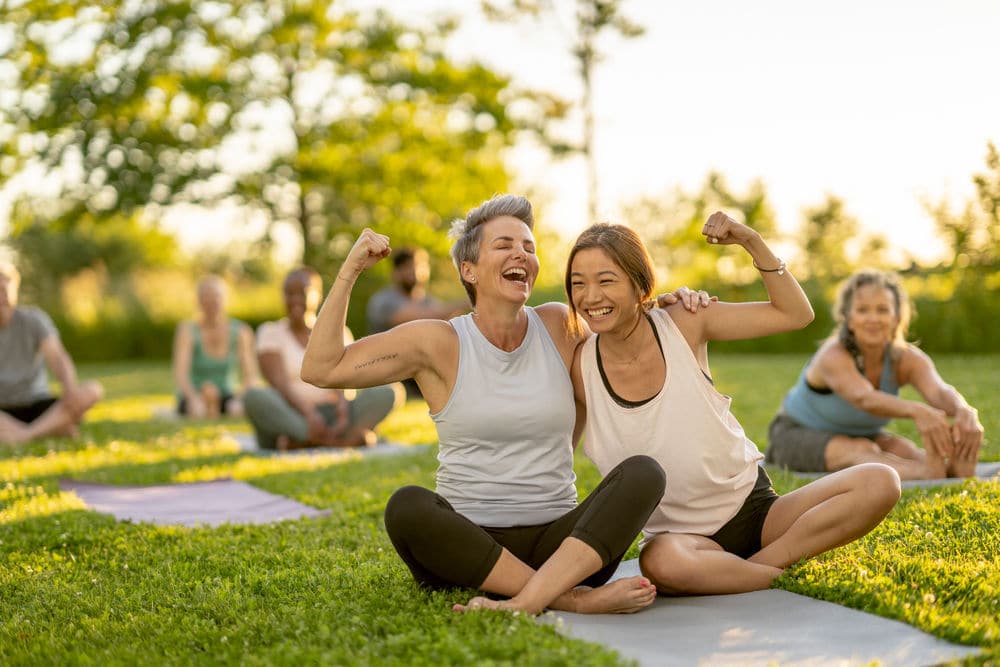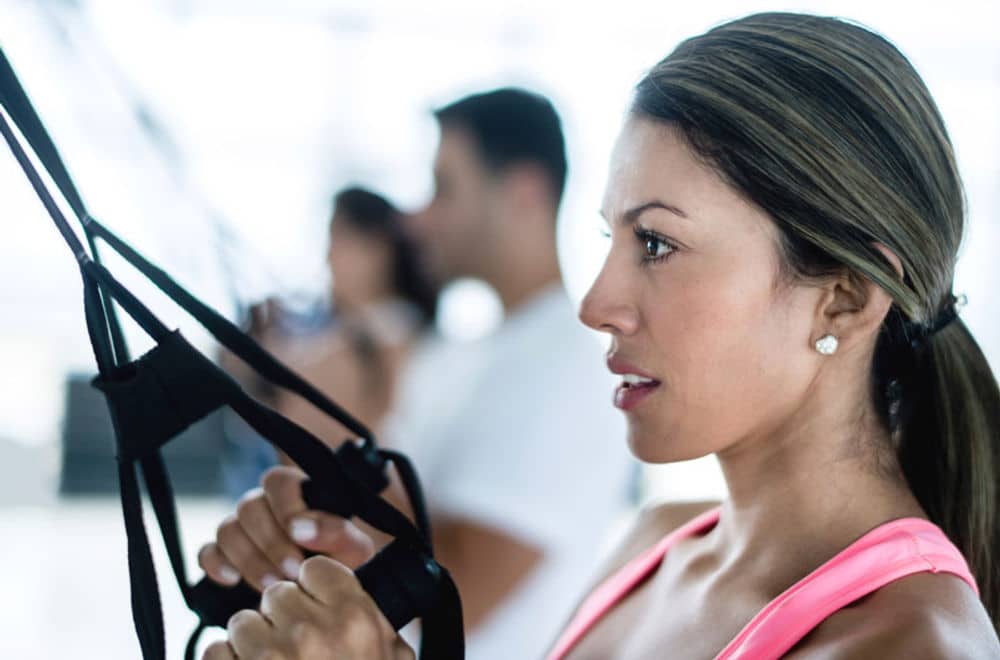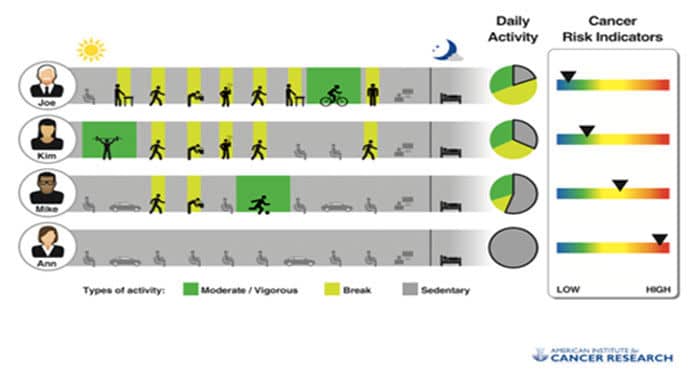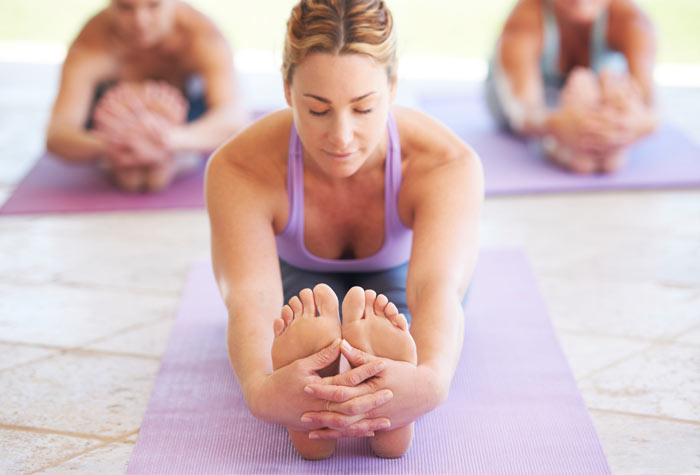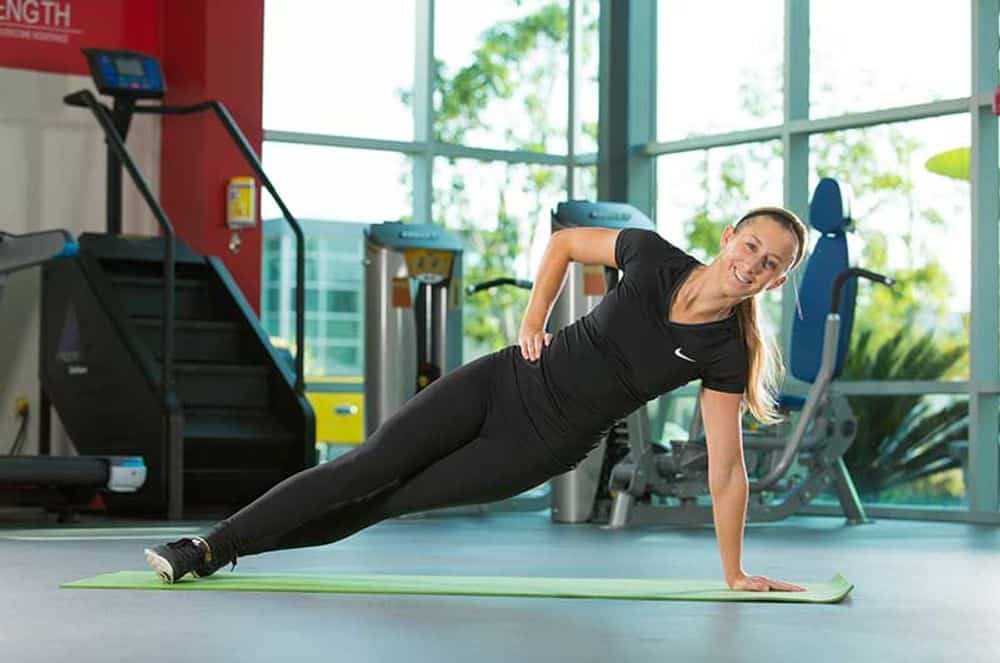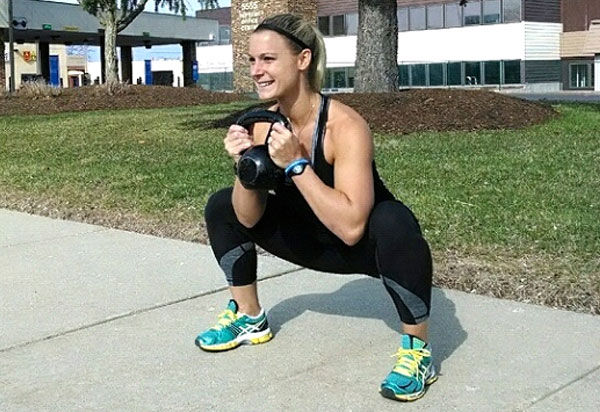Over the course a lifetime, train lovers will expertise dozens of various methods wherein they’ll transfer their our bodies. Tendencies, fads, hobbies and the like lead us to continuously attempt new and completely different actions we will use to problem our power, mobility and stamina. A number of workouts, nonetheless, have withstood the take a look at of time resulting from their simplicity and effectiveness, and each health fanatic ought to have a working information of those “classics.”
In fact, context is all the things on the subject of naming a basic. From an train standpoint, classics may very well be considered “elementary” or “foundational.” Whether or not the objective is to enhance flexibility, power or general health and stamina, some model or adaptation of those workouts is normally a part of the equation.
Whereas well being and health professionals can (and can) argue endlessly concerning the “finest” train, studying how one can do the next two basic foundational workouts builds a basis to get match, robust and versatile for all times.
Basic #1: The Push-up
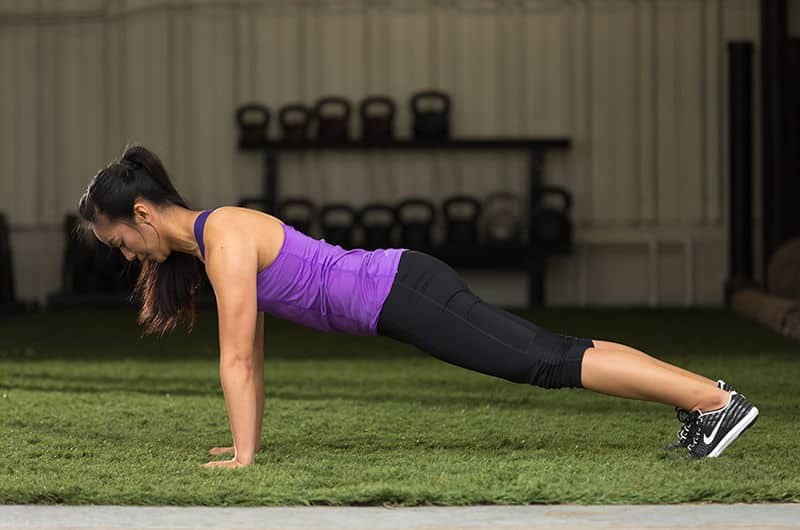
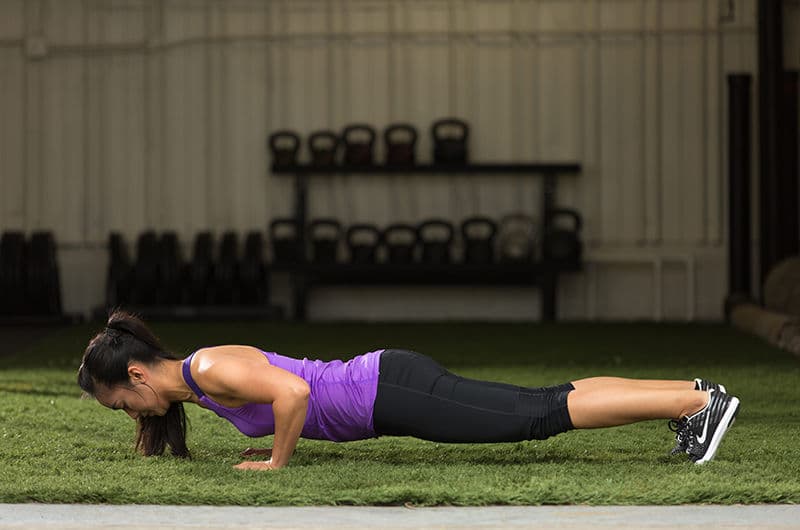
Why is it a basic?
Push-ups require the complete physique to work collectively as a unit because the muscle mass of the entrance of the torso (chest and shoulders) and the again of the arms (triceps) transfer the physique towards and away from the bottom.
As the complete physique is suspended towards gravity, practically each muscle is concerned in maintaining the core, legs and even the pinnacle from crashing to the bottom. When you’ll be able to maintain your total construction collectively as a unit when you transfer your mass utilizing the muscle mass of your higher physique, you might have a terrific basis not solely from which to be taught new workouts, however to be robust for day-to-day actions.
What do you’ll want to learn about it?
Opposite to a lot of our experiences with PE academics and coaches, there’s extra to studying how one can do the push up than merely “Drop and provides me 20!”
The following time you do a push-up, undergo this whole-body guidelines:
Begin: Start in an all-fours place with the shoulders over the palms and the hips over the knees. Your head ought to be in entrance of your fingers. Slowly straighten the knees till your total physique (apart from the palms and toes) is suspended fully parallel to the bottom.
Head and Neck: All through the motion, hold your head and neck ready as if holding a tennis ball below the chin.
Shoulders: Your shoulders ought to be at a barely larger angle than 45 levels, however lower than 90 levels to the physique. Your shoulders mustn’t elevate towards the ears because the physique is lowered. The shoulder blades ought to transfer towards each other as your chest approaches the bottom and keep pretty impartial on the best way up. All through the motion, the shoulders mustn’t fall again behind or pitch ahead over the palms.
Palms: Your palms ought to be open and intensely gripping the bottom, significantly on the best way up. On the best way down, they need to be gripping the bottom as if “pulling” the physique down.
Hips: All the muscle mass of the hips and torso ought to be intensely inflexible, as if performing a whole-body plank train. The hips ought to be in step with the backbone and parallel to the bottom with out visibly elevating or miserable.
Knees: The knees shouldn’t be bent in any respect, because the quads and glutes ought to squeeze tightly all through the complete motion.
Toes and Ankles: The toes and ankles ought to be fully perpendicular to the ground with out falling to both aspect all through the motion.
Respiration: Your breath ought to be introduced in by the entrance, again and sides of the decrease stomach when you are transferring towards the bottom. On the backside of the push-up, your breath ought to be exhaled below strain because the physique rises.
Basic #2: The Hip Hinge
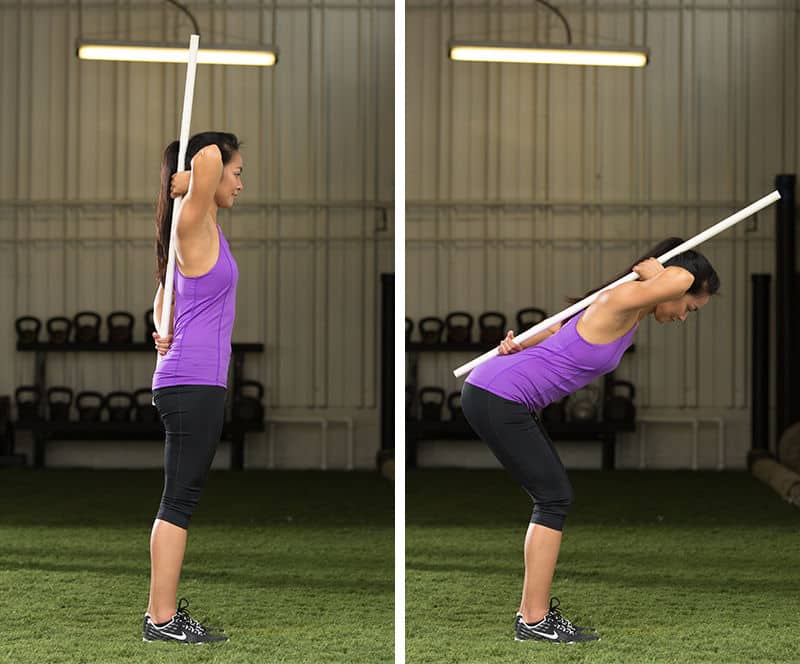
Why is it a basic?
In the event you want to maneuver your torso nearer to the ground (to choose one thing up or transfer below one thing, for instance), your physique has two methods:
- Bend the knees
- “Hinge” on the hips
More often than not, nonetheless, you’ll make use of a mix of the 2.
Main hip-hinge workouts, such because the deadlift, use the hinging of the hips along side the muscle mass of the higher physique to drag a weight off of the ground.
Once you use your hips as a hinge, you’ll be able to make use of the massive muscle mass of the glutes, hamstrings and even the higher and decrease again. These posterior muscle mass get extraordinarily weak if you sit at a desk, or in planes, trains or cars. Sadly, that is the place many people spend a majority of our time. When these muscle mass are weakened, it turns into tough to keep up an upright posture. The result’s an entire bevy of aches, pains and accidents.
When you’ll be able to hinge your hips appropriately, you strengthen these vital posture muscle mass and combat the injury accomplished by a chair-bound life-style. The hip hinge can be an vital element of different train, sports activities and life actions.
Moreover, hip-hinge workouts such because the deadlift and kettlebell swing recruit giant quantities of muscle, which is nice for constructing muscle and burning fats.
What do you’ll want to learn about it?
Undergo this whole-body guidelines to learn to carry out a hip hinge correctly:
Begin: You’ll want a dowel that’s about 3 toes lengthy (a brush deal with works effectively). Align it together with your backbone, gripping it with one hand up behind the neck and one hand on the lower-back space. If the stick is longer than the backbone, don’t let the rest of the size go beneath the tailbone. The again of your head, the realm between the shoulder blades and the tailbone ought to stay involved with the dowel by the complete motion. Safe this place by holding the dowel to those factors with each palms.
Press your again towards a wall and the first step foot-length away from the wall. At this distance, place your toes at shoulder-width distance aside. Start with the knees barely bent, however don’t allow them to bend any additional throughout the motion. Transfer the hips backward towards the wall and the torso towards the ground, maintaining all of the above-mentioned factors of contact with the dowel. Maintain the hips transferring backward till they contact the wall, and hold the torso transferring downward till it both reaches parallel to the bottom otherwise you start to lose contact with the dowel at your head, the realm between your shoulder blades or the tailbone.
As soon as this level is reached, maintaining all factors of contact, return to the upright place.
Head and Neck: Maintain your head involved with the dowel all through the complete motion.
Shoulders: Maintain the shoulders down and again; don’t allow them to elevate towards the ears because the torso strikes towards the ground.
Palms: Use the palms to safe the dowel towards your head, the realm between the shoulder blades and the tailbone. The palms should additionally really feel any lack of contact, and the motion have to be stopped at this level.
Hips: The hips ought to transfer backward towards the wall, when you preserve the pure curve of the decrease again.
Knees: The knees ought to stay at a slight bend, however not proceed to bend throughout the motion. They need to straighten, however not lock on the high of the motion.
Toes and Ankles: Your physique weight ought to be felt towards the midfoot and heel, with no weight transferring ahead to the toes.
Respiration: Your breath ought to be introduced in by the entrance, again and sides of the decrease stomach whereas transferring the torso towards the ground. When the underside of the motion is reached and the torso begins to maneuver upward as soon as once more, your breath ought to be launched below stress.
These two basic workouts are on no account the one foundational, time-tested requirements on the planet of train. The record may go on. Odds are, nonetheless, it doesn’t must. Start by mastering these two oldies however goodies, and watch your power, health and adaptability skyrocket when you keep away from accidents.


